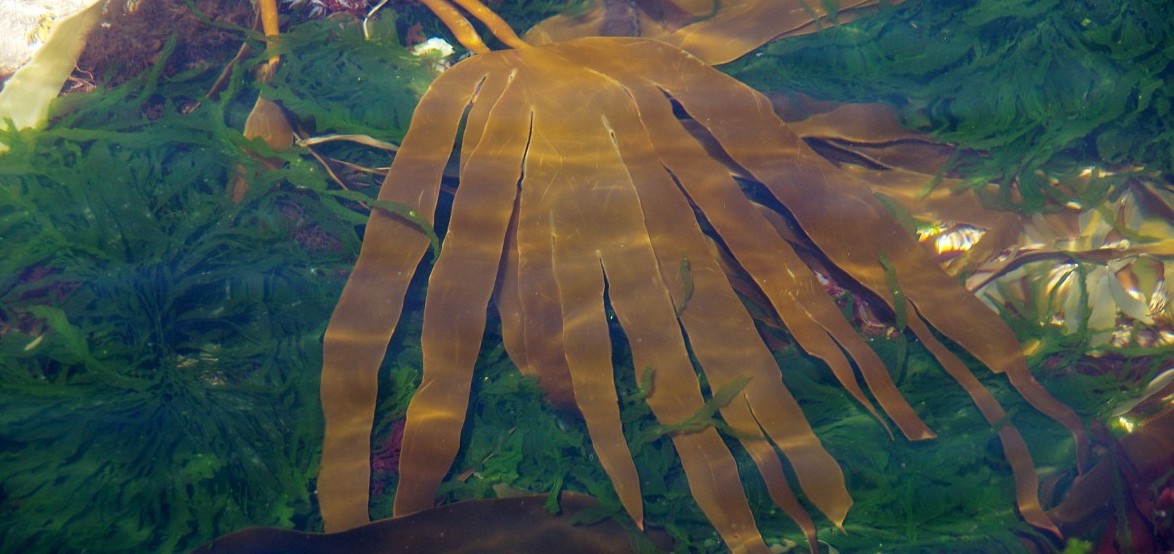Eojo
Eojo refers to several species similar to real-world verities of Laminaria. They are often not distinguished because of their similar life-cycles, cooking properties, and can be used in the production of Haejik and Eojo Dye. Eojo has been harvested by people in Gyerim since before recorded history with possible large scale agriculture around 600 years ago.
Basic Information
Anatomy
The plant grows long stipe (stems) with blades (leaves) coming off he sides of it in what are commonly called fronds. Some of these blade fronds can be trimmed off as the plant grows without harm to the plant. At the base of the stipe before it reaches the holdfast (roots) is a large bladder that contains toxic materials the plant filters from the body of the seaweed. When this specialized filter becomes overwhelmed is when the plant turns yellow and reaches the end of its lifecycle.
Genetics and Reproduction
These species, like most sea plants, reproduces once they reach maturity by creating spores that in turn reproduce among each other and spread the plants. Aquaculturists are able to "seed" their growing nets by suspending nets strung with seashells or pieces of hard plant matter around their current eojo crop. The zygotes created by the spores embed in this substrate and start growing new eojo plants. They can also be reproduced through cuttings, but this reduces the lifespan of the plant.
Growth Rate & Stages
The plant as a "plant" stage (sporophyte) and a sexually distinguished "spore" stage (gametophyte) like most sexually reproducing seaweeds. It spends most of it's life in the plant stage. It will typically grow for 3 to 5 years before its filter bladder is overwhelmed and the plant begins to turn yellow. If left alone, it will die and release from its holdfast in the winter following its poisoning.
Ecology and Habitats
Eojo seaweeds perfer cooler water near a coast. It optimally grows close to an outflow of a river or some other place of high nutrient water. In nature, it will anchor itself into softer rocks and compacted sediments on the sea floor, but in aquaculture it will anchor to hard organic materials.
Additional Information
Uses, Products & Exploitation
The blades of eojo while it is still green can be eaten, mainly in the form of soups, flavorings, salads, and jellies.
The stipe and blades become woody when the plant turns yellow, making it ideal for the manufacture of Haejik, but toxic for humans to ingest.
This yellow form is also used to make Eojo Dye, but how it is made is a secret.
Geographic Origin and Distribution
Naturally in the colder coasts of the White Sea, though it has been spread to other cold-water areas by people.
Lifespan
3-5 years
Average Length
A long-lived specimen of eojo can grow to up to 4 meters long.
Body Tint, Colouring and Marking
The eojo has a brown stipe with blue-green blades for most of its lifecycle. Towards the end following the failure if its filter bladder, the blades turn yellow.
Related Materials
Remove these ads. Join the Worldbuilders Guild









Comments